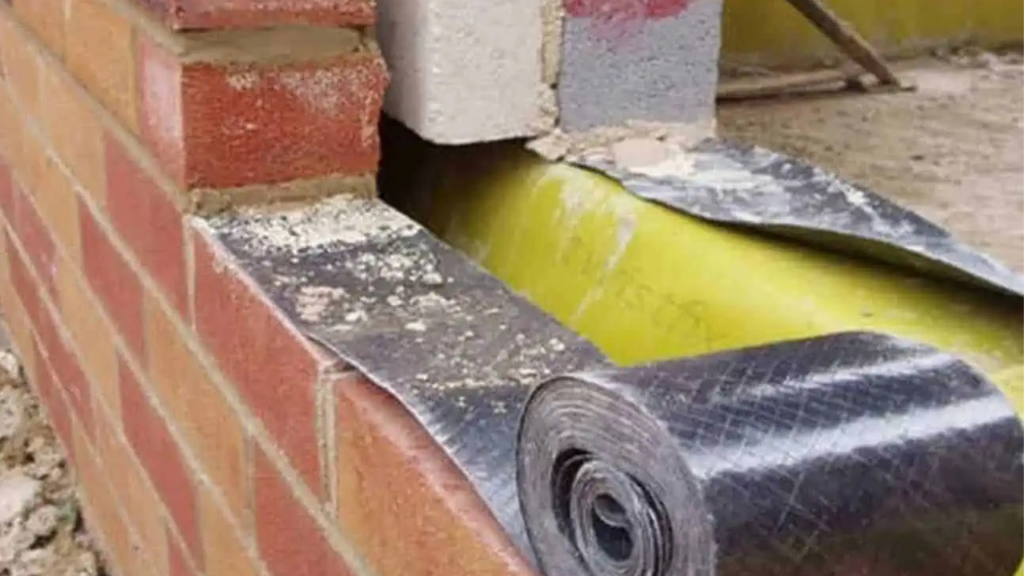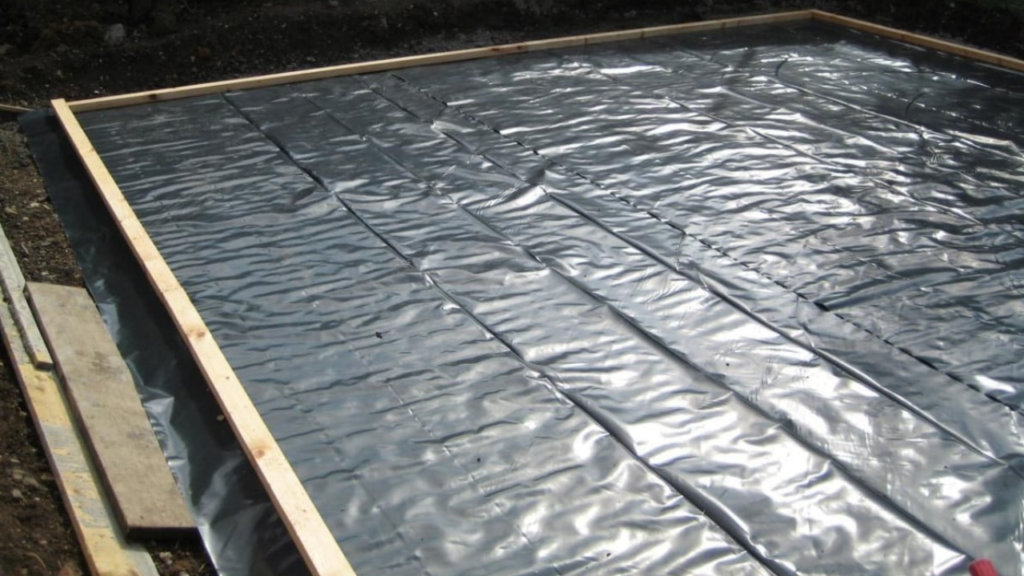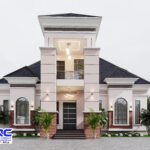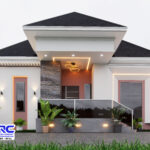Protecting a building from moisture is essential in construction to ensure its durability and structural integrity.
Two common methods for controlling moisture infiltration are Damp Proof Course (DPC) and Damp Proof Membrane (DPM).
While both serve the purpose of preventing moisture from penetrating building structures, they differ in their application, materials, and functionality.
Bullionrise consult will explore the differences between DPC and DPM, helping you understand their roles and how they work together in building construction.
Table of Contents
Toggle
What is DPC (Damp Proof Course)?

A Damp Proof Course (DPC) is a horizontal or vertical barrier installed within a building’s walls to prevent moisture from rising through capillary action.
It is typically positioned at least 150 mm above ground level to stop water from traveling upward through masonry or concrete.
See also – what is dpc meaning in construction and its purpose
Types of DPC
DPC can be made from various materials depending on the building requirements and environmental conditions:
- Bituminous felt – Flexible and waterproof.
- Plastic sheets (polyethylene) – Durable and resistant to moisture.
- Slate – Traditionally used and highly durable.
- Metal sheets (copper or lead) – Long-lasting but more expensive.
- Chemical DPC– Injected into walls to create a moisture-resistant layer.
Purpose of DPC
The main purpose of DPC is to Prevent rising damp (water moving up through porous building materials).
It also Protects structural integrity by reducing water-related damage such as efflorescence (salt deposits) and prevents moisture from damaging interior finishes like paint, plaster, and flooring.
Why do we use DPC?
A Damp Proof Course (DPC) is a crucial element in building construction and renovation, especially for walls in direct contact with the ground.
Its main function is to serve as a barrier against rising damp, which occurs when ground moisture moves upward through walls via capillary action.
This moisture can cause various issues, such as structural damage, mold formation, and deterioration of interior finishes.
What is DPM (Damp Proof Membrane)?

A Damp Proof Membrane (DPM) is a sheet of impermeable material placed beneath concrete floors or slabs to prevent moisture from rising from the ground into the building.
It acts as a continuous barrier against moisture ingress from the soil.
See also – what is DPM? meaning in construction and its purpose
Types of DPM
DPM is typically made from:
- High-density polyethylene (HDPE) – Strong and resistant to chemicals.
- Polypropylene – Flexible and tear-resistant.
- Bituminous coatings – Applied directly to concrete surfaces for waterproofing.
Purpose of DPM
The main purpose of a Damp Proof Membrane is to Prevent ground moisture from seeping into floors and walls.
It also Protects floor finishes such as tiles, wood, and carpet from dampness and ensures the longevity of structural elements by controlling moisture levels.
When do we use a DPM?
A Damp Proof Membrane (DPM) is commonly utilized during construction or renovation projects to safeguard floors against moisture.
It is particularly crucial for ground floors in direct contact with soil, as this increases the likelihood of moisture rising through concrete slabs or other flooring materials.
By serving as a reliable barrier, the DPM effectively prevents water vapor and dampness from infiltrating living or working spaces.
Key Differences Between DPC and DPM
In terms of Location, Damp Proof Course is installed in walls (horizontal or vertical) while Damp Proof Membrane is installed under floors or slabs.
When it comes to Purpose, Damp Proof Course prevents rising damp from the ground through walls while Damp Proof Membrane prevents moisture from seeping through floors.
Material for Damp Proof Course is Slate, bitumen, plastic, metal, chemical while Polyethylene, polypropylene, bituminous coating are materials for Damp Proof Membrane.
Damp Proof course is Laid at least 150 mm above ground level in the walls while Damp Proof Membrane is laid beneath concrete floors or slabs.
Damp Proof Course protect walls and masonry. Floors and concrete slabs are protected by Damp Proof Membrane.
Damp Proof Course can be inserted during construction or retrofitted. Damp Proof Membrane is Applied as a continuous layer under the floor slab.
How DPC and DPM Work Together
In modern construction, both DPC and DPM are often used together to create a comprehensive moisture protection system.
The DPC blocks moisture from rising through walls, while the DPM prevents moisture from the ground from penetrating the floor slab.
Proper installation of both ensures that the building remains dry and structurally sound.
Conclusion
The primary difference between DPC and DPM lies in their location and function.
DPC protects walls from rising damp, while DPM shields floors from ground moisture.
Understanding their distinct roles and how they complement each other is essential for effective moisture control in building construction.
By properly installing both DPC and DPM, builders can ensure that a structure remains dry, stable, and durable for years to come.
Frequently asked questions
What is the difference between DPM and DPC membranes?
Damp Proof Membrane (DPM) is a flexible waterproof sheet primarily used beneath floors or foundations to prevent ground moisture from seeping into the building.
Damp Proof Course (DPC) is a horizontal barrier installed in walls, typically above ground level, to stop moisture from rising through the structure via capillary action.
While DPM safeguards floors and foundations, DPC focuses on protecting walls from dampness.
What is the difference between a DPC and a damp course?
There is no difference between a Damp Proof Course (DPC) and a “damp course”; they are two terms for the same feature in construction.
Both refer to a horizontal barrier placed within walls to prevent rising damp by stopping moisture from traveling upward through the structure.
Common materials for a DPC include bitumen, polyethylene, slate, or engineering bricks.
What is DPM & how does it work?
A Damp Proof Membrane (DPM) is a flexible, impermeable sheet used in construction to protect floors and foundations from moisture ingress.
It works by forming a continuous barrier that prevents moisture from the ground from penetrating the building structure.
Typically made of materials like polyethylene, the DPM is laid beneath concrete slabs or foundations with overlapping joints to ensure full coverage.
This prevents water vapor and dampness from rising into the building, safeguarding it from moisture-related issues like mold and structural damage.
Can DPM be used on external walls?
Yes, Damp Proof Membrane (DPM) can be used on external walls, especially for underground or retaining walls requiring extra moisture protection.
It serves as part of a waterproofing system to prevent water ingress, ensuring the walls remain dry and protected.
How do DPC and DPM work together?
Damp Proof Course (DPC) and Damp Proof Membrane (DPM) work together to create a continuous barrier against moisture in a building.
The DPM, placed beneath floors or foundations, prevents ground moisture from penetrating upward into the structure.
The DPC, installed horizontally within walls above the DPM, stops rising damp from traveling through the walls.
By connecting and overlapping properly, they ensure comprehensive protection against moisture-related issues in both walls and floors.







